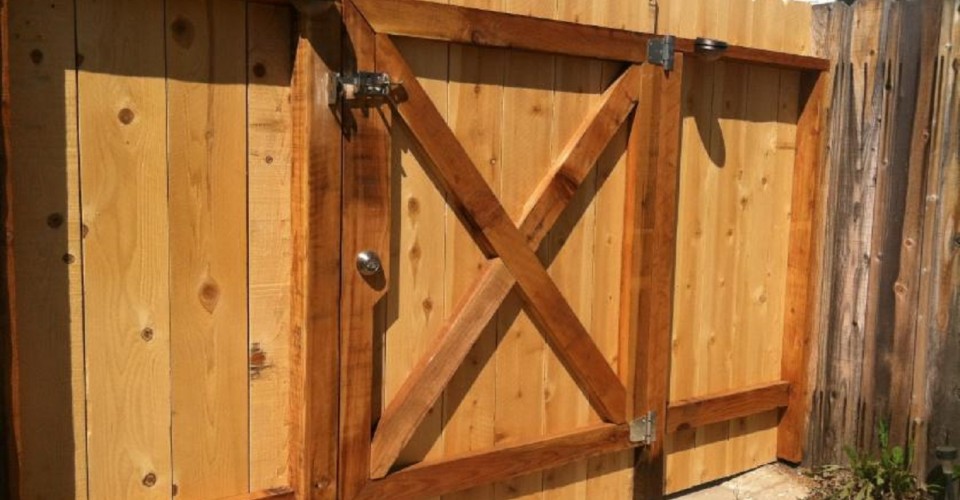Building a vinyl paneled fence around the perimeter of your home or installing a wood picket fence with a gate in the front entrance can add curb appeal and protection to your home. When planning a fencing project, it’s important to form a budget you can stick to. The best budget will be built around your needs and requirements, and will keep in mind labor, material costs and your overall timeline. For example, if you require a fence to keep your dog in or the deer out, then you should budget for a tall, sturdy fence in the correct material such as wood or chain link. Or perhaps all you need is a fence to help define your landscaping; you’ll want to start pricing out decorative fences. Know the cost drivers of a fence construction project to outline prices and factors to help you feel more prepared for your project.
When deciding what type of fence you want to install, consider that different materials will result in varying prices and quality. Compare the cost vs. value when choosing your material. Some fencing materials, such as wood, is more commonly used because it’s less expensive then metal or vinyl and is a traditional style. However, wood doesn’t last as long as metal or vinyl and is higher maintenance. A wood fence will require re-staining or painting every few years to maintain quality and durability. Depending on your location, size of desired fence, and hired service, installing a fence for your home can cost around $2,000 – $3,000 (installers usually quote fencing projects by price per linear square foot) and a fence repair usually averages below $1,000. To build or install your desired fence without wasting time and money, hire a professional and draft a realistic budget.
How to create a budget
When beginning to draft your budget, there are some standard components when it comes to fencing projects that should be included. The following factors will have an impact on how much money you will be spending per material and for costs of labor:
- Perimeter of construction area
- Height of the fence
- Materials
- Whether you DIY or hire a fencing contractor
- Intricacy of the fence
- Longevity of the fence
- Which contractor or contracting company you hire
- The material supplier
- Terrain where fence is constructed
- Any gates or entryways
- Fancy trim
- Lighting or electrical
- Electronics, such as motion sensors or security cameras
- Home automation features
- Permits required (read this article on obtaining a fencing permit)
If you’re contemplating any of the previously mentioned additions, a contingency budget should be drafted along with the original budget. Being prepared for any unexpected costs that may occur during the process of your project or after completion is beneficial to your home.
Know your materials and scope of work
One of the biggest determinants of your budget will be the materials you choose to use and the overall scope of work. The type of material you choose (wood, vinyl, metal, chain link, etc.) are all priced differently and the labor costs of each may also increase or decrease depending upon the material. The scope of work also greatly affects your costs. If you require locking gate doors, exterior lighting along the fence or want embellishments or detail, these choices will most likely increase your costs. If you need your fence to go along a sloped area or require excavation, this will also increase your costs. During the bidding process, you’ll want to discuss all of these issues with the professional and gain their expert opinion and problem solving ideas. The best pro will be someone that can listen to your needs, address any issues and deliver the best product for your budget.
Gather an estimate
An estimate is a general approximation of price for your fencing project and will be given to you by your hired contractor. When shopping for a contractor, ask them to submit estimates. Be sure the contractors have visited your property in person, shown you their license (as well as proof of insurance and bonding), and are providing bids on the same materials and scope of work so you can compare quotes equally. When you are given multiple estimates it’s important to choose a contractor with an estimate in the range of what you were planning to pay for the project. Decide on your desired materials, design, and any additional products you may want to use, prior to contacting contractors. If you change your mind after the contract has been signed, more money might be charged for more labor and revisions.
Sign a contract
To ensure that your project guidelines and budget are understood, sign a fencing contract. A contract is a legally binding agreement between you and all parties involved, that can be used as a paper trail and protection for you, your project, and your home. A fencing contract will outline all budgeting agreements regarding your fencing project with details specific to pricing of materials, costs of labor, and any equipment rental that may be necessary. Also outlined in your contract will be a timeline of your project according to the designated length of time you plan the process to take.
Consider the amount of construction time you need and be sure to coordinate with the contractor, so they are fully aware of the budget abiding by your allotted project time. If a contractor charges less, but takes a long time to finish and is charging by the hour, you could end up paying more. If possible, require contractors to submit an estimate based not on hours but on a flat rate for the complete project. To ensure cost control, have your detailed contract signed by you and your contractor and implement checkpoints with contractors to discuss the fence progression. A written record will protect you against any misunderstandings or unexpected expenses. With pre-planning and diligence, your fencing project will run smoothly while keeping your costs under control.
Top Image Credit: Mr. Fence




